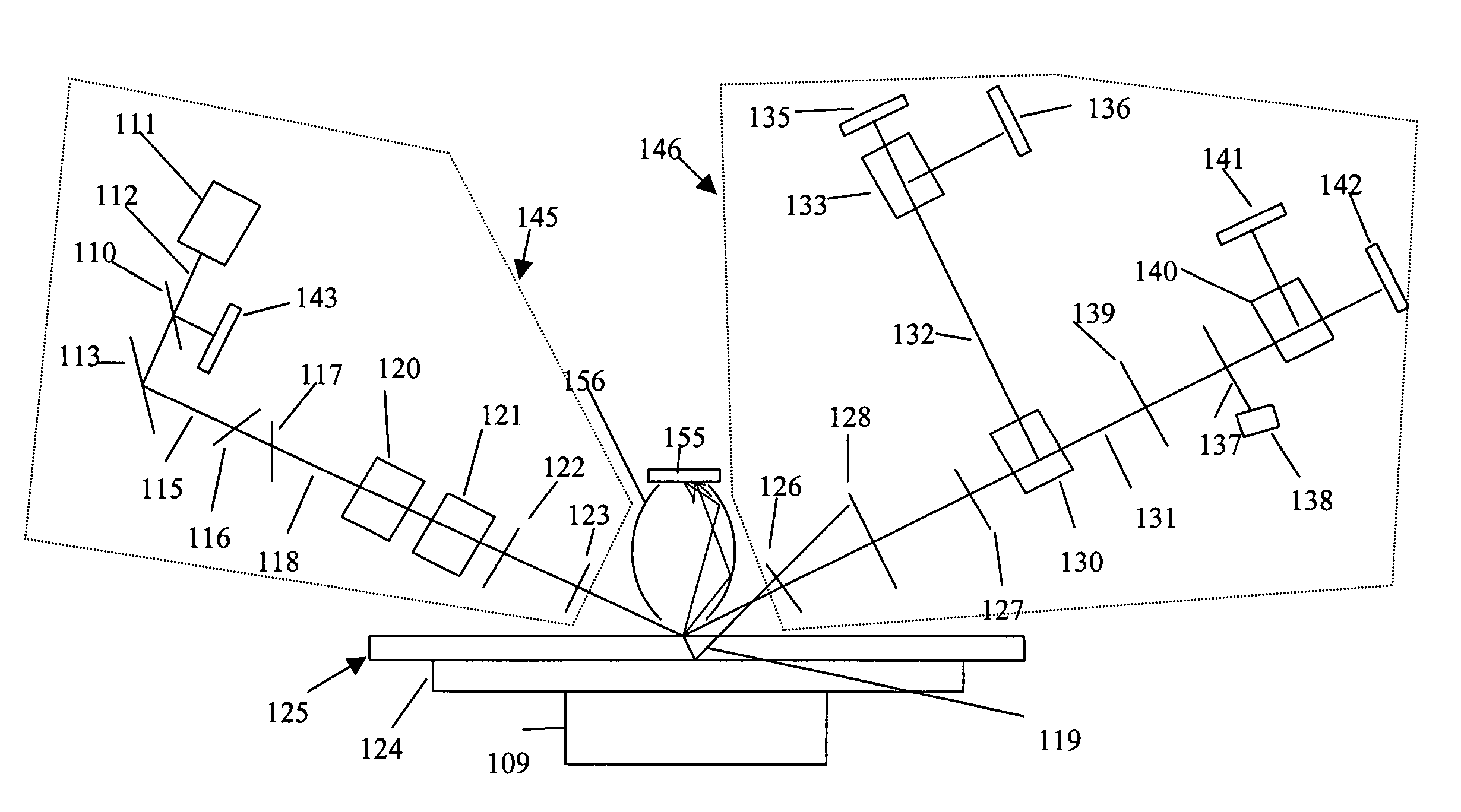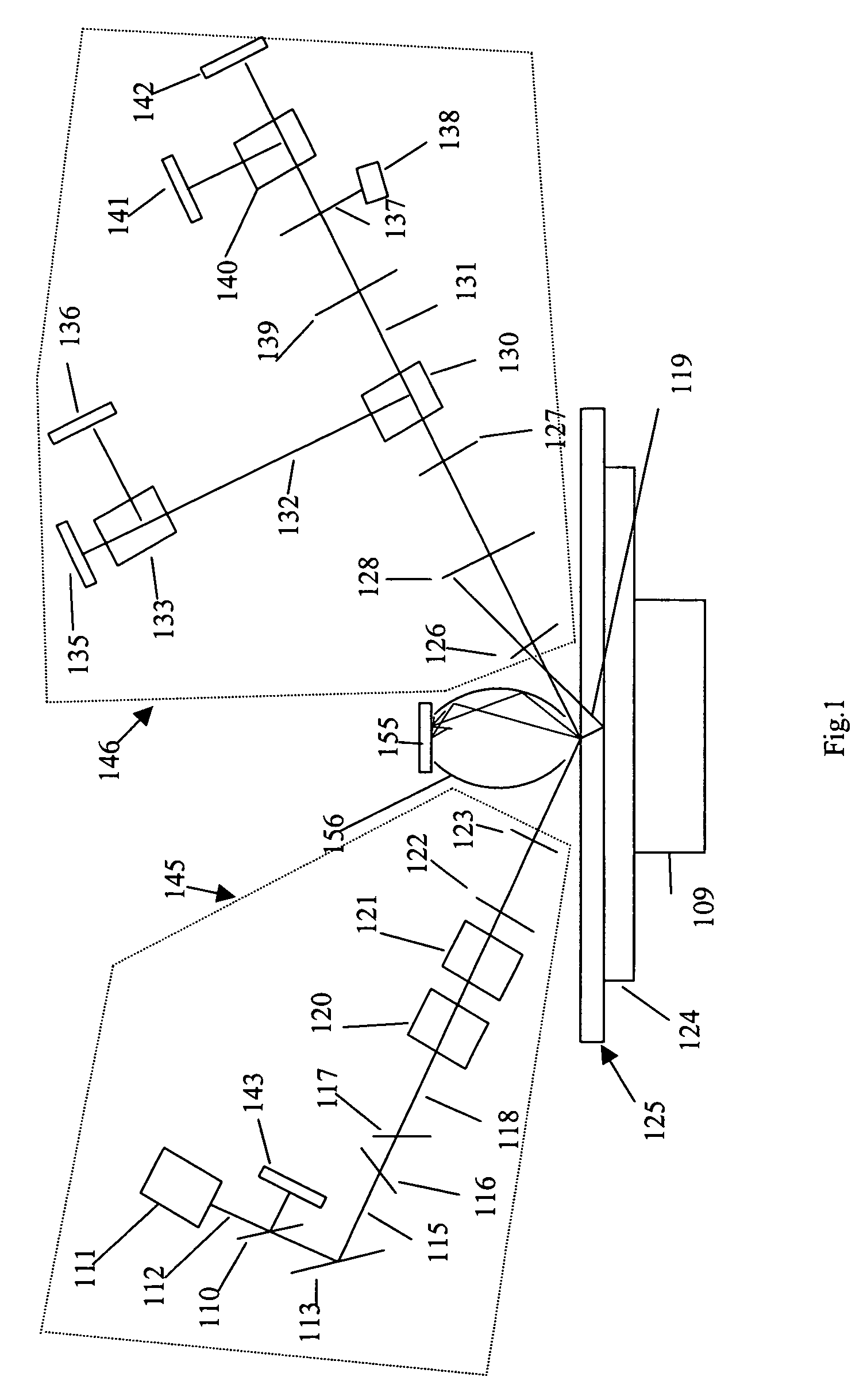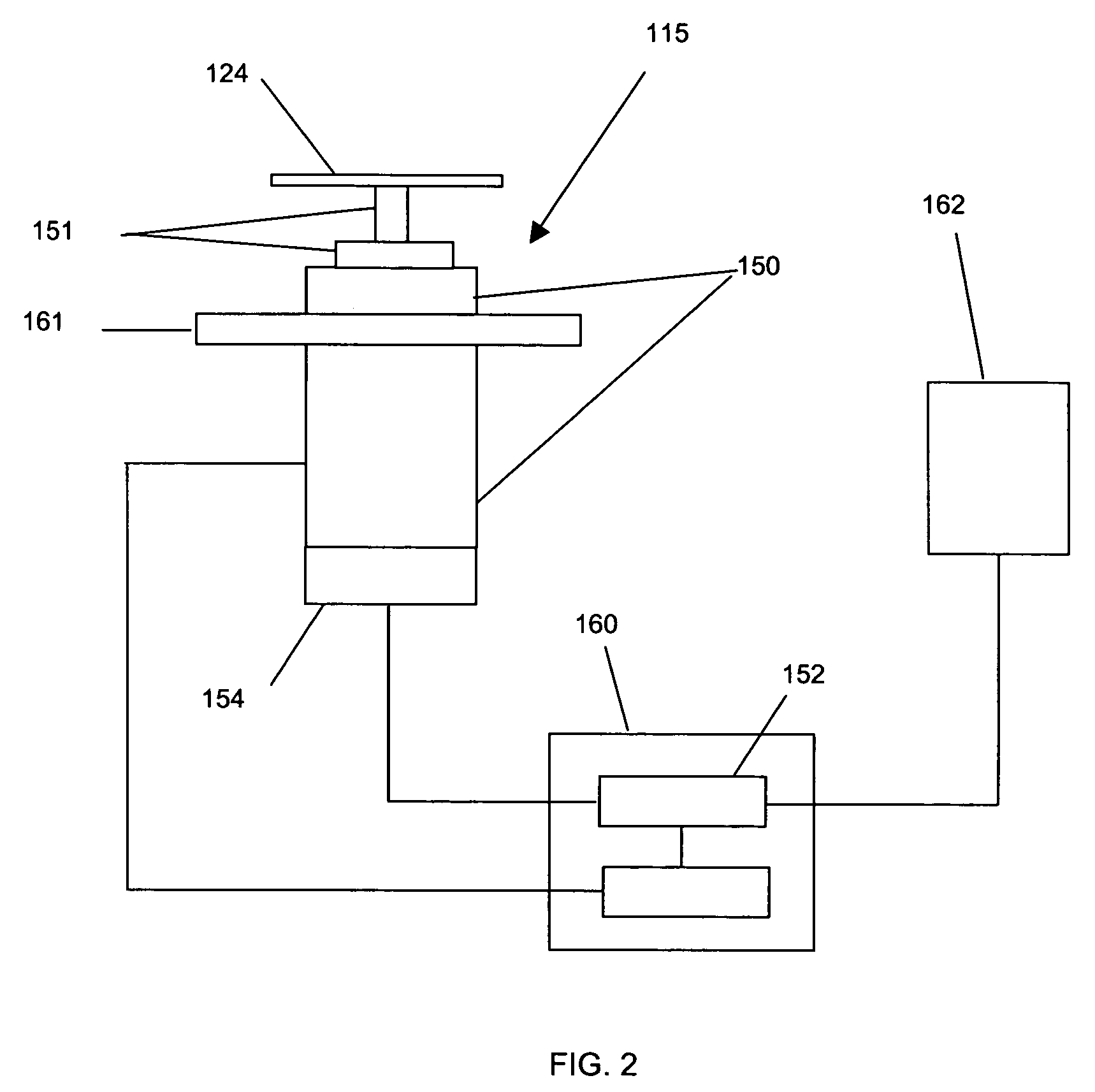Reflectance surface analyzer
a surface analyzer and reflectance technology, applied in the field of optical instruments, can solve problems such as inefficiency, and achieve the effect of efficient gathering and detection of incoming signals
- Summary
- Abstract
- Description
- Claims
- Application Information
AI Technical Summary
Benefits of technology
Problems solved by technology
Method used
Image
Examples
Embodiment Construction
[0016]Referring now to FIG. 1, a light source 111 directs a beam illustrated as 112 through a beamsplitter 110 and a detector 143 to monitor the laser power. The beam is then directed onto a mirror 113 where it is reflected as beam 115 (different numbers are being used in connection with different sections of the beam in order to simplify understanding of the drawings). The mirror is positioned on a mirror mount to steer the beam so that it eventually strikes the surface under examination at an angle of approximately sixty degrees. The mirror 113 permits use of a folded optical system that has the effect of shortening its length. However, if the overall length of the system is not important, the mirror could be omitted. The angle of incident although not unique, is chosen to fall within the range of 50 & 80 degrees from the normal. The beam next passes through filters 116 and 117. These are neutral density filters placed at an angle other than normal to the beam and in an opposite s...
PUM
| Property | Measurement | Unit |
|---|---|---|
| intensity stabilized wavelength | aaaaa | aaaaa |
| wavelength | aaaaa | aaaaa |
| angle | aaaaa | aaaaa |
Abstract
Description
Claims
Application Information
 Login to View More
Login to View More - R&D
- Intellectual Property
- Life Sciences
- Materials
- Tech Scout
- Unparalleled Data Quality
- Higher Quality Content
- 60% Fewer Hallucinations
Browse by: Latest US Patents, China's latest patents, Technical Efficacy Thesaurus, Application Domain, Technology Topic, Popular Technical Reports.
© 2025 PatSnap. All rights reserved.Legal|Privacy policy|Modern Slavery Act Transparency Statement|Sitemap|About US| Contact US: help@patsnap.com



